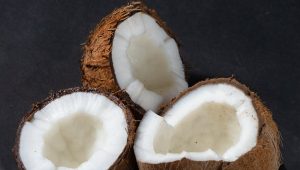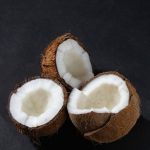Written by an expat who orders cortados in Madrid cafés at 7 a.m. and downs steaming tintos from Bogotá street carts at 7 p.m.—discovering that the flavor difference is only half the story.
Prologue: One Traveler, Two Mugs, Infinite Opinions
My WhatsApp lights up every morning with two distinct messages. Carlos in Bogotá sends a photo of a tiny plastic cup brimming with black liquid and the caption “¡Tinto para despertar!” An hour later, Marta in Madrid forwards a snapshot of a porcelain glass—equal parts espresso and steamed milk—titled “Cortadito de media mañana ☕.” The contrast isn’t just beverage aesthetics; it’s two civilizations’ attitudes toward time, taste, and social glue.
Living between the Dominican Republic, Spain, and Colombia, I’ve learned the shortest route to a culture’s heart is through its coffee break. And nowhere do the differences reveal themselves more charmingly than when a Spaniard and a Colombian argue—politely—over which cup offers the truest coffee experience.
So, grab whatever brew you have—cortado, tinto, or maybe a Dominican café con leche—and join me for 1,700 words of caffeinated storytelling, linguistic gems, and practical vocabulary.
Setting the Stage: Two Coffees, Two Continents
Spain’s Cortado—Small but Sophisticated
A cortado is a shot of espresso “cortado” (cut) with a dash of steamed milk, usually in a 4‑ to 6‑ounce glass. Spaniards debate the ratio like sommeliers examine terroir. In Madrid, my go‑to barista uses one ounce milk for every ounce espresso, calling it “equilibrio perfecto.”
Spanish: “Un cortado bien tirado lleva la leche solo para suavizar, no para dominar.”
English: A properly poured cortado uses milk just to smooth, not overpower.
Colombia’s Tinto—The People’s Brew
Meanwhile, a tinto in Colombia is an eight‑ounce cup of simple black coffee, lightly sweetened, served in everything from porcelain to disposable styrofoam. It’s democratic: cab drivers, CEOs, students, and abuelas sip tinto all day.
Spanish: “El tinto es la columna vertebral de la jornada.”
English: Tinto is the backbone of the workday.
Though roast profiles differ by region—fruitier in Huila, chocolaty in Antioquia—tinto generally leans bright and light‑bodied, brewed in large urns called grecas.
Morning Rituals: Timing Is Everything
7:00 a.m. in Madrid—A Standing Cortado
Marta texts: “¿Quedas en la barra del Café Gijón?” We meet at the counter—Spaniards rarely sit for their first coffee. She orders:
“Póngame un cortado y una tostada con tomate, por favor.”
The barman serves the cortado in 45 seconds. We sip, exchange headlines, and part ways within five minutes. Speed matters; the cortado is fuel, not an experience to linger over.
7:00 a.m. in Bogotá—A Walking Tinto
Carlos waits outside my apartment with two small cups:
“¡Toma, calientico, recién salido de la greca!”
Here, nice and hot, fresh from the coffee urn!
We stroll toward his office, cupping warm plastic against Bogotá’s chilly altitude. We chat for ten blocks; tinto is a portable companion. If the cup empties, a vendor appears: “Tinto, tinto, ¡mil pesos!” The cycle repeats.
Flavor Showdown: Density vs. Lightness
Marta claims cortado offers depth:
“El espresso concentra todos los aceites y aromas. Un sorbo y despiertas.”
Espresso concentrates all oils and aromas. One sip and you’re awake.
Carlos counters:
“El tinto no abruma; te acompaña suave durante horas.”
Tinto doesn’t overwhelm; it gently accompanies you for hours.
Tasting Notes Comparison
| Attribute | Cortado | Tinto |
|---|---|---|
| Body | Dense, syrupy | Light, tea‑like |
| Acidity | Balanced, citrus hints | Bright, sometimes sharp |
| Sweetness | Subtle, cocoa | Often pre‑sweetened |
| Mouthfeel | Creamy from milk | Clean, watery |
As a neutral expat, I find cortado’s crema luxurious, yet appreciate tinto’s easy drinkability. Choice mirrors mood: deadline mornings demand cortado; long writing sessions call for multiple tintos.
Social Scripts: How to Order Like a Local
Ordering Cortado in Spain
Step to the bar, catch the bartender’s eye, state confidently:
“Un cortado, por favor.”
Optional modifier:
- “en vaso” – served in glass (standard)
- “muy corto de leche” – very little milk
- “descafeinado de máquina” – decaf espresso
Baristas appreciate directness; no need for elaborate politeness beyond por favor and gracias.
Ordering Tinto in Colombia
At a street cart:
“Un tinto, por favor, sin azúcar.”
A tinto, please, no sugar.
If you like it sweet:
“Con poca azúcar, gracias.”
With a little sugar, thanks.
Cart vendors remember preferences; next visit they’ll greet you:
“¿Sin azúcar, cierto?”
No sugar, right?
Cultural Layers: Price, Pace, and Place
| Aspect | Cortado (Spain) | Tinto (Colombia) |
| Typical Price | €1.50–2.00 | COP 1,000–2,000 (~€0.25–0.40) |
| Drinking Pace | 3–5 minutes | 15 minutes or more |
| Venue | Café bar counter | Street, office, home |
| Social Role | Quick pick‑me‑up | Continuous social lubricant |
Price Insight: Spain’s higher labor costs inflate cortado’s price. In Colombia, subsidized coffee culture dates back to the National Federation of Coffee Growers—keeping street tinto cheap.
Milk Matters: The Dairy Divide
Cortado’s steamed milk softens espresso’s acidity. Spaniards debate microfoam level; some request “cortado manchado”—literally “stained” coffee with extra milk.
By contrast, traditional tinto eschews milk. Adding milk turns it into a pintado or café con leche. Street carts seldom carry milk; they joke:
“Aquí el tinto sale negro como la conciencia de un político.”
Our tinto comes out as black as a politician’s conscience.
Roast and Brew: The Technical Breakdown
Cortado
- Roast: Medium‑dark European roast
- Grind: Fine
- Method: Espresso machine (9 bar pressure)
- Ratio: 1 oz espresso : 1 oz steamed milk
Tinto
- Roast: Light‑to‑medium, preserving acidity
- Grind: Medium
- Method: Drip or percolator greca
- Ratio: 1 part coffee concentrate : 4–5 parts hot water
Barista friends remind me: the greca’s low pressure extracts slowly, explaining tinto’s thin body.
Conversations Over Cups: Real Dialogue Snippets
Madrid Café Counter
Marta: “¿Notas el tueste? Tiene un final achocolatado.”
Me: “Sí, y el toque de leche le da cuerpo sin matar la acidez.”
English: Marta: Notice the roast? It finishes chocolaty.Me: Yes, and the milk gives body without killing the acidity.
Bogotá Street Corner
Carlos: “Este tinto de la Señora Gloria siempre sabe igual.”
Me: “Es como un abrazo en vaso.”
English: Carlos: Señora Gloria’s tinto always tastes the same.Me: It’s like a hug in a cup.
Health Myths and Reality: Which Cup Wins?
Spanish espresso lovers claim milk buffers acidity. Colombian friends argue light roasts are easier on the stomach. Science says caffeine per ounce in cortado is higher but total caffeine per serving may equal an 8‑oz tinto. Sugar in tinto poses calorie concerns; Spaniards often skip sugar in cortado.
Ultimately, moderation—and staying hydrated—matters more than the brew.
Bridging Cultures: Hosting a Coffee Blind‑Tasting Night
I once invited Marta and Carlos to my Santo Domingo apartment. I prepared three anonymous samples:
- Madrid‑style cortado
- Bogotá‑style tinto
- Dominican café con leche
We rated aroma, body, acidity. Surprise: Carlos ranked cortado #1, praising its “golpe concentrado.” Marta adored tinto’s “sabor alegre.” Moral: loyalty bends when taste buds roam.
Practical Spanish Vocabulary Cheat Sheet (Spanish → English)
| Term | Meaning |
| Garrafa | Large coffee urn (DR) |
| Greca | Stove‑top percolator (CO) |
| Café cargado | Strong coffee |
| Café clarito / aguado | Weak coffee |
| Recalentar | Reheat (coffee) |
| Chorro de leche | Dash of milk |
| Azúcar morena / panela | Brown sugar / unrefined cane sugar |
| Sin endulzar | Unsweetened |
Conclusion: Choose Your Brew, Choose Your Mood
Cortado or tinto? It’s less a rivalry than a mirror reflecting cultural tempo. Spaniards prefer concentrated flavor and quick conversations; Colombians savor gradual warmth and continuous connection. As an expat, I no longer pick sides. I start my day with a crisp cortado—like turning the ignition. By afternoon, I nurse two tintos—steady fuel for ideas.
So next time your Spanish or Colombian friends debate their superior brew, raise your cup and toast: “¡Salud por el café que nos une, aunque lo bebamos distinto!”
Que cada sorbo, ya sea cortado o tinto, te acerque más a la gente y al idioma que amas. ¡Buen provecho y ánimo cafetero!







